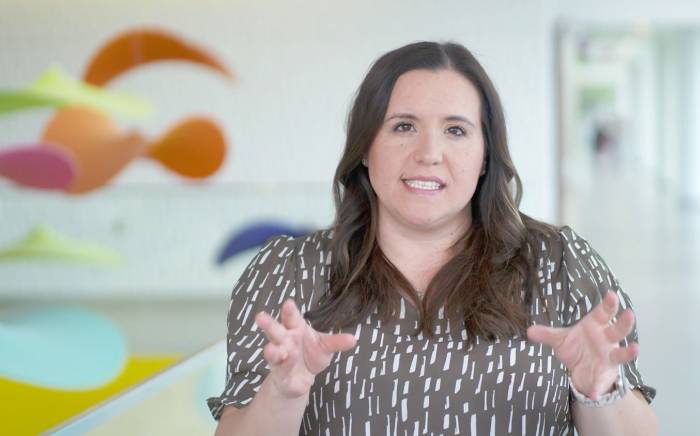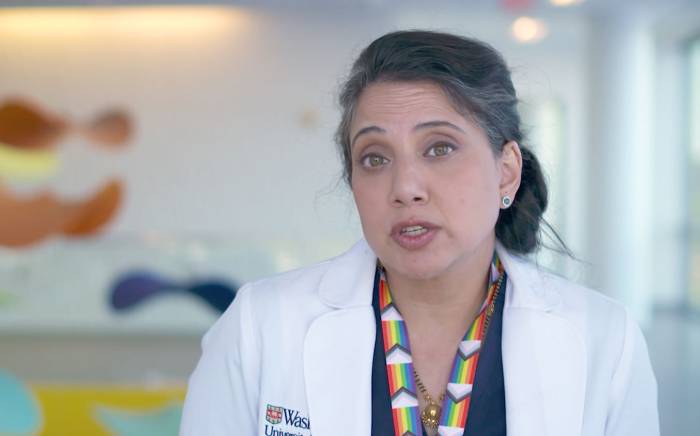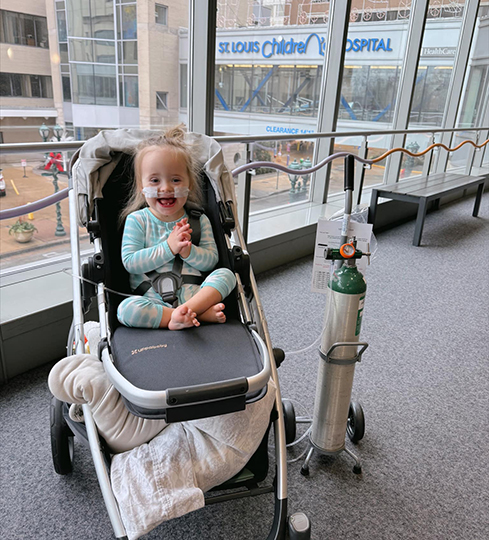Whether you're packing for a tropical vacation or preparing for the summer sizzle, it's important to remember some simple steps to staying safe in the sun.
The enchantment with having a "good tan" and looking "healthy" has led many people, including teenagers, to avoid using sunscreen. The American public is sold on the fact that it is both healthy and fashionable to have a suntan. Public awareness of the hazards of long-term sun exposure have been heightened recently, especially since Presidents Reagan and Clinton have both had skin cancers. But this hasn't changed the advertisements for clothes, vacations and fun where people are tan and unprotected from the deleterious effects of the sun.
How does sunlight cause damage to the skin?
Solar energy consists of visible, infrared and ultraviolet rays. Visible rays have a minor effect of the skin. Infrared rays cause the sensation of heat. Ultraviolet rays (UV) are those which affect the skin and cause damage to the DNA of cells. UVA (mainly found in tanning parlor units) penetrate deeper into the skin and cause damage to the collagen, accelerating the aging process. Heavy exposure causes wrinkling of the skin and abnormal pigmentation (old age spots). UVB, which represents 0.2% of the sun's total energy, is considered to be the "sunburn spectrum". This is the UV which causes redness and pain after excess exposure.
When unprotected skin is exposed to sunlight, a phototoxic reaction can occur, with sunburn being the most common type of reaction. This manifests as redness, pain, and sometimes swelling. It begins several hours after exposure, reaches a peak at 14 to 20 hours, and lasts a total of 24-48 hours. If damage is severe, redness may be followed by peeling as well as increased pigment or freckling.
What problems will happen to my skin if I don't protect it?
Long-term effects on the skin include chronic changes such as wrinkling, dark spots, light spots, enlarged blood vessels, thinning, scaly crusty spots and skin cancers. People with skin types IV, V and VI will not have the same degree of sun damage as their fair skinned counterparts.
What are skin types?
- Type I: Very fair skin, freckling; blonde, red, or brown hair. Always burns easily. Never tans.
- Type II: Fair skin; blond, red or brown hair. Always burns easily. Tans minimally.
- Type III: Brown hair and eyes. Burns moderately. Tans gradually and uniformly to a light brown color.
- Type IV: Light brown skin. Dark hair and eyes. Burns minimally. Always tans well to a moderate brown.
- Type V: Brown skin. Dark eyes and hair. Rarely burns, tans profusely to a dark brown.
- Type VI: Brown-black skin. Dark eyes and hair. Never burns. Deeply pigmented.
What difference does it make what skin type I have?
Whether or not a person develops a sunburn depends upon a number of factors: the length of exposure, the patients' skin type, the direction of sun's rays, the time of day during exposure, the geographical location, the altitude, and age of the patient. Infants and young children are at risk. Direct sun rays, high altitude, and tropical locations are all factors which increase solar energy received by the skin. Also the time of day: between 10 am and 5 pm have increased solar energy.
How can I protect myself and my child against harmful rays of the sun?
Fair skinned individuals (Types I, II, III) should be protected as much as possible. Skin cancer increases with increased sun exposure. Although skin cancers occur more commonly in whites than in blacks, no person is immune. Nonmelanotic tumors are associated with the total amount of accumulated sun exposure, whereas melanomas have been associated with short, intense sun exposure. Severe sunburns during childhood may predispose a susceptible person to develop melanoma in later life. Some of the risk factors for the development of nonmelanoma skin cancers are: fair skin types I and II, residence near the equator, positive family history of skin cancer, outdoor lifestyle.
Sun Damage is Cumulative
Therefore, it makes sense to avoid any extended exposure. Ideally, this would be accomplished by staying out of the sun entirely, but this is neither practical nor desirable. The next best advice is to avoid the strongest radiant energy and to use sunscreens liberally.
Recommended Sun Strategies from Dr. Bayliss Malory:
- Avoid sun exposure during the most intense period the day (10am-5pm)
- Try to cover up. A broad-brimmed hat can reduce exposure to the face, which is the most common site for non-melanoma skin cancers. Wear long sleeves, as well. Consider a bathing suit with legs and short sleeves for children. These are easily available on the Internet (Look under Bathing Suits for Kids) if you can’t find them in stores. They are all the rage in Australia!
- When unable to do the above, wear a sunscreen. Use a broad spectrum sunscreen with SPF 30 minimum if there will be extended sun exposure. Apply ½ to 1 tsp of the sunscreen to the face. Apply the same amount to each arm and exposed areas of the shoulders and neck. Apply the equivalent of 1-2 tsps to each leg and 2 tsp to the upper body when more time is spent in the sun.
Currently available sunscreens block much but not all incident UV, and should not be thought of as offering complete sun protection. For the most part, sunscreens are helpful in preventing sunburn. When picking a sunscreen, consider the base. Is it creamy or dry (alcohol based)? Is it non-comedogenic (doesn’t promote acne)? These products might be preferred on the face. - Be aware of your skin. If you notice signs of reddening or longer term photoaging, minimize further exposure.
- Wearing sunglasses will help prevent cataracts in adulthood and should have UVA protection.
- Immunosuppressed individuals, such as transplant patients, have a much higher incidence of skin cancer and really should be covered up when going outside. So it is important to protect patients on immunosuppressant drugs.
How do you treat a sunburn?
Once the damage has been done to the skin, it is impossible to repair it with medicine. Aspirin is an excellent analgesic for early redness. Cool compresses can relieve symptoms. Topical anesthetics such as benzocaine should be avoided since they have the potential to sensitize the skin, causing allergic reactions. Topical aloe vera, jojoba oil and vitamin E have been touted to alleviate sunburn reactions, but these agents have not been well studied. Bland emollients such as petrolatum and cool soaks are good alternatives.
One Last Tip!
You CAN have fun in the sun and be protected as well. Summer is, after all, for fun!
This article was written by Susan Bayliss, MD, Washington University professor and the director of the pediatric dermatology department at St. Louis Children's Hospital.










